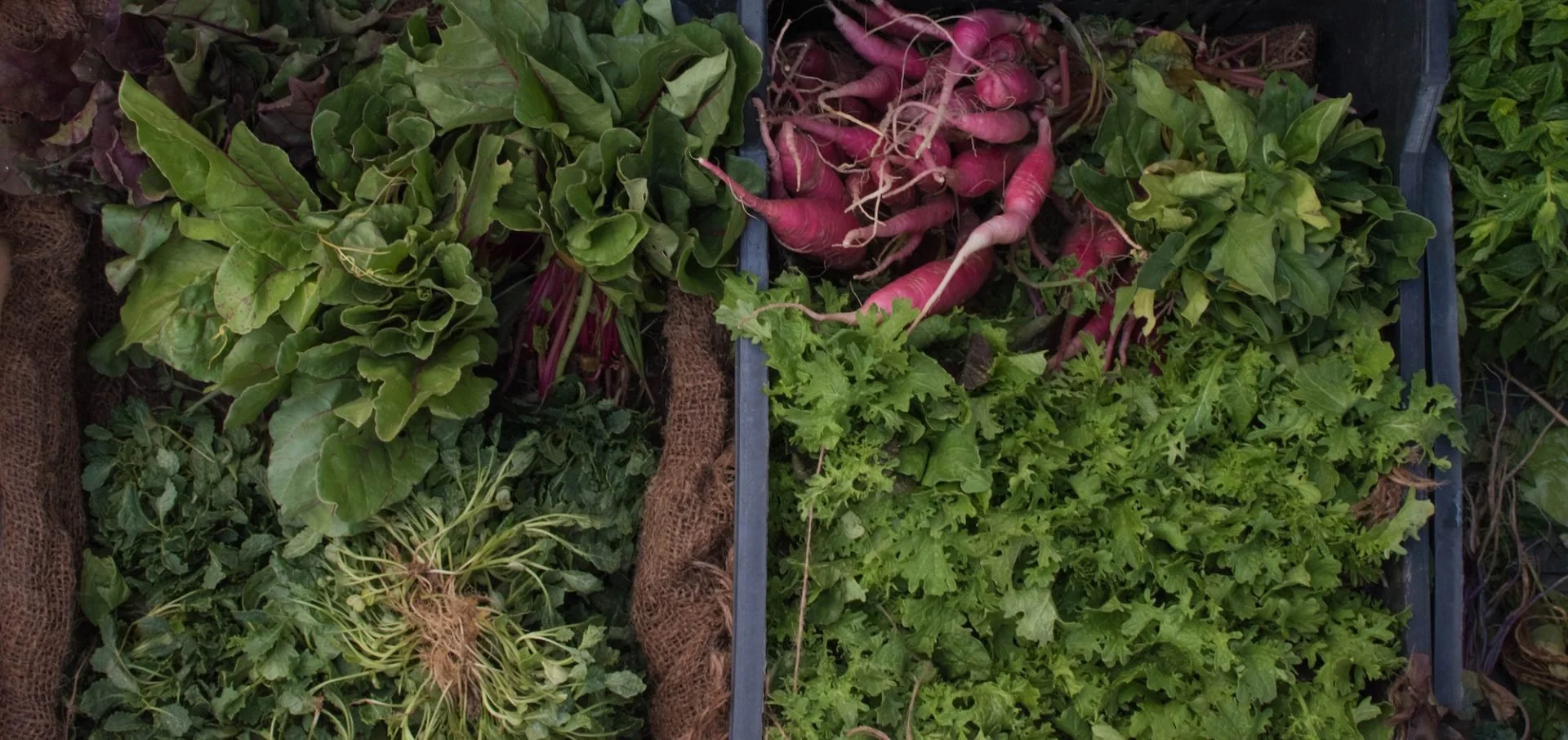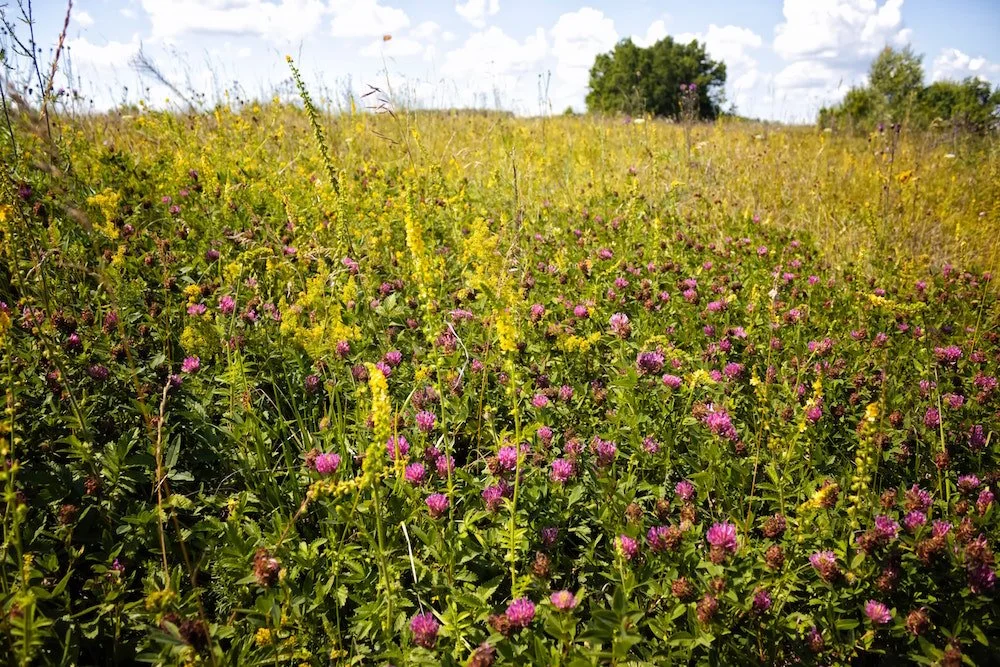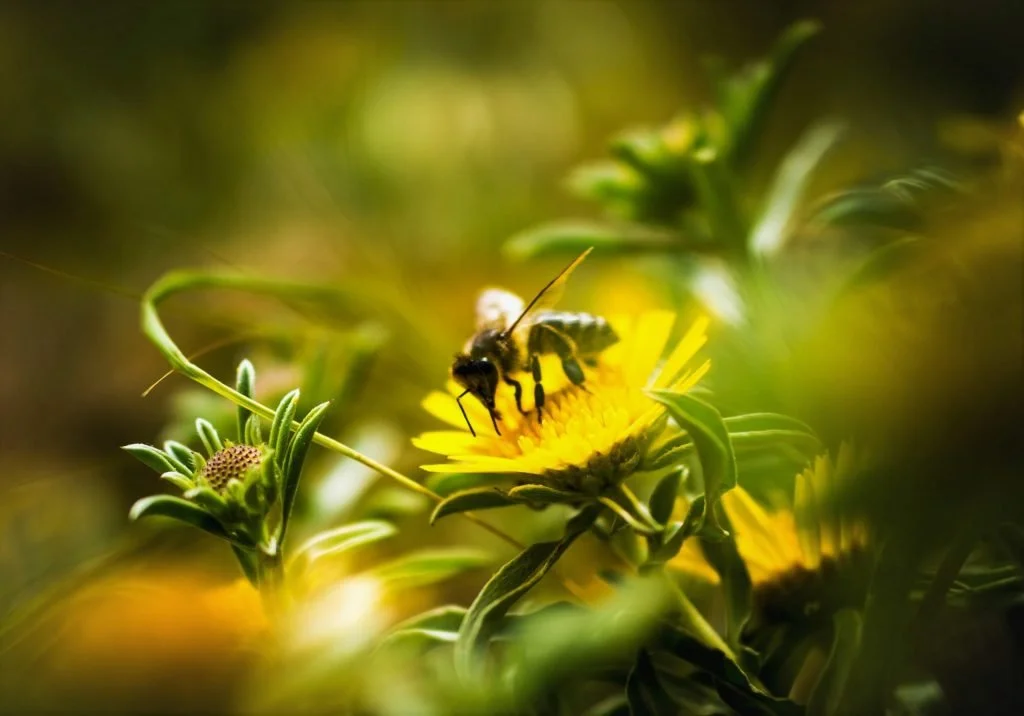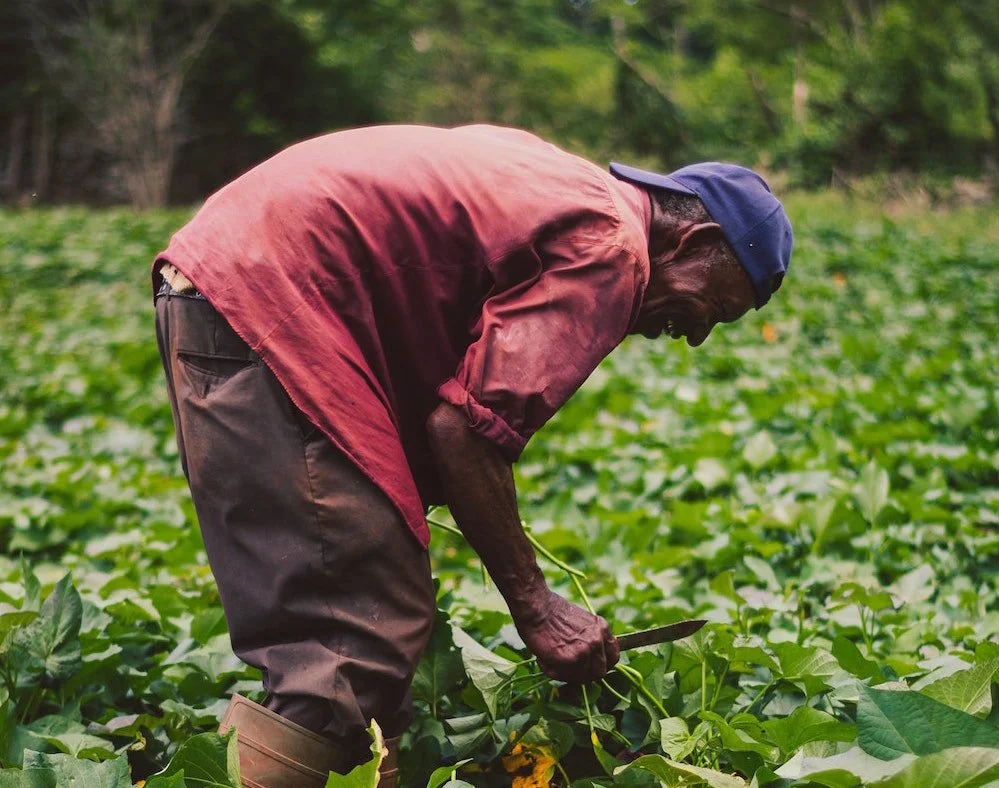Regenerative Agriculture: Diverse Potential
Discover > Farm to Table Eating in Texas > Regenerative Agriculture: Diverse Potential
Our food has become more important than ever. It’s a topic of international debate and frames a large part of determining our uncertain future. It can feel overwhelming at times, and I find myself asking: how do we even begin to approach this issue? It’s a daunting task to try and sift through masses of information, with new studies coming out on what seems like a daily basis. One clear fact stands out, however: the truth is that the way we produce and consume our food is one of the largest contributors to our changing climate.
Conventional agriculture makes up half of all greenhouse gas emissions – making this the largest area that can be tackled to battle the current effects of climate uncertainty. As debates, political policymakers, environmentalists, theorists, and most everyone else continue to try to assess the situation, make changes to the way industry, and the average person, consumes, many methods are touted as being the ‘solution’ to the widespread, complex, and frightening issues we are facing as a planet.
As part of that on-going discussion, you may have heard the term ‘regenerative agriculture’ before and wondered, what does that mean? And what makes it different from conventional agriculture? Is it a viable alternative?
Conventional Agriculture
First, we need to understand the state of conventional agriculture as it stands today. Currently, according to the 2017 Agricultural Census, the US has 2.05 million farms, covering a staggering area of 900 million acres – this covers almost 40% of the U.S.’ landmass. The Great Plains, Corn Belt, Wheat Belt – these are just some of the names you might know that are given to expansive swathes of the U.S. landscape that are largely dedicated to conventional, industrial-sized farming.
Heavy tilling of the soil is commonplace, coupled with monoculture crop systems (when whole fields are planted with a single type of crop, usually wheat, corn, and soybeans), have increased the risk of desertification. This type of cropping system also means the crops are increasingly susceptible to pests (an abundance of food = an abundance of feeders), and therefore many conventional farms rely on chemical pesticides to control and protect their crop. The downside to this reliance on chemicals and large-scale mechanization has resulted in increased soil erosion, loss of biodiversity, and increasingly resistant weeds and pests (thereby again intensifying the use of chemicals).
With discussions around climate change and environmental impacts at an all-time high, more and more farmers are looking to change their practices; faced with razor-thin margins, increased dependency on chemicals, mutation of weeds and insects leading to increased resistance to said chemicals, and an economy that is increasingly less favourable to agricultural businesses. The reality many farmers face is to either scale up or adapt if they want to continue to work in the industry. However, industrialized monoculture cropping still remains the most prevalent form of farming, with corn and soybean production topping the scales, followed by dairy and beef cattle production.
The realities of current conventional farming methods bring to mind the horrifying images of the Great Dust Bowl of the 1930s. Increasing desertification due to longer, more frequent droughts, sporadic rainfall, and delayed frosts, are leading to a spike in arid landscapes across the world. According to the U.N., 30% of the U.S. is already classed as arid or desert, while another 40% is at risk of desertification. What this means, effectively, is that we are losing farmable land – and soil, the very foundation of life – at an alarming rate. The worst part is, that many of the practices utilised in conventional agriculture (over-grazing, heavy tilling, monoculture fields, heavy pesticide and chemical fertilizer use, etc.) contribute directly to the vast depletion of soil and the nutrients contained within.
But this hasn’t always been the case. So, how did we get here? And what does that landscape today mean for our landscape tomorrow? Where does regenerative agriculture come into the picture? To begin to understand the term regenerative agriculture, we need to understand its origins.
Alternative Methods
The reality is, that many of the techniques applied in regenerative agriculture (RA) are directly associated with what are perceived as ‘traditional’ farming methods. To incorporate these origins into our understanding of the application of these methods today, we need to go back in time: back to before this land was called the U.S., even before it was called the ‘New World’. Many studies have revealed that the monoculture farming and soil-eroding practices that are prevalent in commercial agriculture today is a by-product of colonization and industrialization.
Historically, traditionally, farming methods were much more varied and complex, relying on a careful balance of living things to provide food, medicine, building materials, etc., for its people. Most of these indigenous and ancient cultures had/have intimate relationships with the nature around them, which they live in, support, and, in turn, farm for their needs. In Eric Toensmeier’s landmark book, The Carbon Farming Solution: A Global Toolkit of Perennial Crops and Regenerative Agriculture (2016), the first lines of the Introduction references this origin:
High in the mountains of Veracruz, Mexico, a small cooperative is practicing agriculture in a way that fights climate change while simultaneously meeting human needs. Although millions of people around the world use these practices in some way, people in Western nations are largely unfamiliar with them, and there is little coordinated support to encourage farmers to adopt them. [Toensmeier, p. 1]
This practical knowledge of multi-layered agricultural systems that fight climate change while providing for its people, also exist in areas such as the Philippines, Africa, Guatemala, Ecuador, for Native Americans, India – increasingly the recognition of the inherent knowledge of native and original peoples is invaluable to finding our climate change solution, and many projects have been established to capture and work with this knowledge [see non-exhaustive list below]. We thereby can immediately begin to understand that these are ancient sets of knowledge that we in the West, in the colonized areas of the world, have lost; these ways of working with the land, of intuitively understanding the plants, pests, animals; natural, supportive, bio-diverse relationships that are all around us and have the potential to benefit us, if we see ourselves as just another species that operates within this cyclical system.
To illustrate just one impact of colonial influence on farming methods and landscape, we can look to the ancient Mayan civilizations, which only began to witness extreme soil erosion in 1000 BC until the Maya Collapse of c. 900 AD. This cycle of events was as a direct result of the first pioneer farmers, which brought with them farming techniques from their respective European countries, eventually leading to a massively accelerated soil erosion, impacting harvests, and ultimately their ability to feed their own population.
It is important to note this heritage of the RA movement before we look at those associated with it now (who, by the way, are predominantly white, nonindigenous people). We have to understand these systems are nothing ‘new’ with regards to methods, techniques, and inter-species/inter-plant relationships, but rather see these current movements as a return to an inherent understanding of the biodiversity and interdependency of crops, plants, livestock and humans as part of one in the same system. To recognise this as an indigenous, traditional method that has incredible potential in this climate crisis to strengthen communities and inform our practices. As the co-founders of Terra Genesis note in their paper, Levels of Regenerative Agriculture:
[Regenerative agriculture] invites practitioners to create new bioregional cultures that draw from the wisdom of the agrarian past of their place, while re-generating cultural systems that are appropriate to the current and coming generations. [Emphasis author’s own]
Rony Lec, Coordinator of the Mesoamerican Permaculture Institute (IMAP) puts it in similar terms:
Many of the issues farmers face can be overcome with simple, inexpensive solutions. The key is to listen to what local people did before modern agriculture, and see how new techniques can complement traditional ways without sweeping them aside.
Many of these indigenous, ancient, pre-colonial systems integrate key areas which are applied in modern-day ones such as permaculture and regenerative agriculture: poly-culture, agroforestry, silvopasture, crop rotations, inter-planting, and water harvesting[i].
Shifting Systems
Initially, the combination of these systems was popularised by David Holmgren and Bill Mollison in the late 1970’s with the advent of the term ‘permaculture’. Originating from the two words: ‘permanent’ and ‘agriculture’, their book, Perma-culture One, packaged these ideas into a way of designing productive agriculture systems from an ecologically holistic viewpoint. Both Holmgren and Mollison credit traditional farming methods as the basis for their book, however, it is easily forgotten, as many of the world’s leading figures in the world of revolutionizing our current agricultural systems are white. People such as Joel Salatin, Alan York, Allan Savory, and Carol Sanford, have all been incredibly important to popularize and promote the RA movement. However, their at times celebrity-like status is not unproblematic. Heralded as radical, contemporary theorizers or practitioners of potential ‘new’ systems, it is often laid to the wayside that the very foundation of regenerative agriculture, permaculture, polyculture, regrarian, biointensive, holistic land management, no-till, soil profit methods (to name but a few) are all based in traditional, indigenous, or ethnic, intuitive ecological methods that have existed for thousands of years. This stresses again the importance of, “draw[ing] from the wisdom of the agrarian past of their place” as an essential part of developing RA practices.
That being said, Holmgren and Mollison’s term ‘permaculture’ is regarded as Australia’s single largest contribution to the sustainability movement of the 1980s - onwards, and has become the springboard for many further developments. Coinciding with a surge in the late 20th century of studies and books that have come to determine the way we now discuss terms such as ‘sustainable’ and ‘organic’. It has inspired countless others to build on their ideas and formulate place-specific methodologies to tackle local climate and soil issues, but also to operate as a way of thinking – acting less as a prescriptive application, and more along the lines of a design philosophy.
In the late 1980s, the Rodale Institute first started using the term ‘regenerative agriculture’ when they formed the Regenerative Agriculture Association, releasing books by its founder Robert Rodale, who favoured this term over ones such as ‘sustainable’.
This initiated a shift in language that wouldn’t be fully appreciated until later. In the midst of the organic movement originating in California around the same time in the 80s and 90s, the terms ‘organic’, ‘sustainable’, ‘green’, were favoured as certifications became commonplace and popularized, while ‘regenerative agriculture’ fell out of parlance.
Popularizing Regenerative Agriculture
As the organic movement began to fail to capture larger efforts and questions of sustainability, from the 2010s onwards regenerative agriculture re-entered into significance, due in large part to Toensmeier’s aforementioned book, The Carbon Farming Solution, coupled with several other important players.
Michael Pollan has brought international attention to the issues faced within how we consume our food, especially in the midst of increasingly climate-focused diets, through his book The Omnivore’s Dilemma and others. Allan Savory initiated the Savory Institute, which focuses primarily on holistic land management through rotational grazing practices to reinvigorate vast areas of grasslands. Alan York (1952-2014) was seen as the figurehead of the biodynamic vineyard operations, especially in California’s eponymous Napa Valley, with a heavy focus on traditional farming methods. Joel Salatin – of youtube, Food, Inc., Polyface Farms fame, and self-described ‘lunatic farmer’, has massively popularized regenerative agriculture, utilizing a variety of methods that work together to create a sustainable, commercially viable farming operation. Carol Sanford well known for her application of the regenerative model on economies and communities, from which the agriculture movement is inspired, theorizes on the term from a holistic and industry-level point of view. The coalescing of many of these big thinkers around the same time that the inconsistencies and ineptitude of the organic, sustainability movement; as people increasingly becoming jaded by ‘greenwashing’ and are looking for real, tangible, viable, realistic, yet radical solutions, regenerative agriculture has made the strongest case for its own potential.
Understanding How It Works
Regenerative agriculture serves to apply the design philosophy of permaculture to create practical, viable, scalable, financially sustainable alternatives to conventional agriculture. And it does so by focusing first, and foremost, on the importance of the soil. In her beautiful book, The Earth Knows My Name: Food, Culture, and Sustainability in the Gardens of Ethnic Americans, Patricia Klindienst illustrates this importance through a simple retelling of a personal interaction:
When Maska Pelligrini said, “It’s our life, you know,” reaching down to pick me something to eat from her garden, she thought she was merely stating the obvious.
The earth is the actual ground of our lives—we grow out of the soil too. If it dies, we die. If it lives, we eat and live. You know this when you grow your own food.
Maska didn’t see this as special knowledge. There was nothing romantic about it. In her experience, it was simple fact, learned as a girl in Italy. But so many of us in America don’t know, or if we once knew, we have forgotten. So little in our culture asks us to remember our dependence on nature.
[Klindienst, p. 241]
The basis of soil as the mother of all life has its roots in several cultures, and, as described above, has long been forgotten in the U.S by way of heavy industrialization, mechanization, and a removal of the ‘human’ relationship to its food.
The necessity of soil to sustain life goes beyond the ability to feed ourselves. Good soil structure, supported by a bio-diverse cover crop root system, and by the natural use and disturbance from animals, bugs, and microorganisms that live upon, alongside, and on it, has incredible potential to stabilize and resist the forces of climate change. It does this through several means, but regenerative agriculture is primarily interested in three areas: supporting biodiversity, water sequestering/harvesting, and carbon sequestering/farming.
Building Biodiversity
Supporting biodiversity is a key aspect of all sustainability movements. By supporting a host of insect, plan and animal life, natural balance and ‘pest control’ can be achieved while removing the need for chemical or mechanical interventions. These intricate ecosystems work to naturally counterweight one another and therefore ensure a system of checks and balances, allowing beneficial crops and beasts to flourish. We are seeing an alarming loss of biodiversity. One of the most popularized outcomes of this is the loss of essential pollinators such as bees, wasps, butterflies, and moths. Again we can learn from traditional ways of farming, as currently, the 370 million indigenous peoples in the world who are occupying or using up to 22 percent of the global land area, are housing 80 percent of the world’s biological diversity.Water Sequestering
Water and carbon sequestering are increasingly championed through the regenerative agriculture movement, due to its potential to stabilize our climate, but also to reverse and/or provide resistance and robustness against climate uncertainty. The principle of water sequestering (a.k.a. harvesting) is that the soil, when supported by diverse root systems and ecological life, is much more able to absorb water, store it, and release it appropriately and with maximum benefit. This has incredible benefits such as minimizing landslides/landfall, minimizing run-off of soil, pesticides, or other harmful substances into rivers/lakes/oceans, supporting a healthier plant system, and being better able to cope with drought or other inclement weather changes.Carbon Sequestering
In the same vein, carbon sequestering is possible as plant systems, most notably perennial crops, but also, to a lesser degree, annual crops, pull carbon from the atmosphere and store it in the soil. The potential for regenerative agriculture and other holistic land management practices to utilise these features and increase the correct conditions, by building more and better soil, is that it is possible to sequester enough carbon to slow, stop, or potentially reverse, current carbon dioxide measurements in the atmosphere to pre-industrial levels.
This is a bold claim, and it would require a large proportion of the agricultural industry to make drastic changes. Those that argue for regenerative agriculture see this as part of the inherent positives of the RA movement, in that it is scalable and requires inexpensive, yet meaningful, adjustments without demanding (at least, initially) that the consumer change their dietary habits, nor asking the farmer to change completely their framework for crop production.
Remembering the Land
The frameworks for these regenerative systems all focus on the necessity of the same things: a rich diversity of plant life in multi-layered systems, the importance of soil and soil health, recognizing the inter-dependency of all plant and animal life (humans and bugs included), and understanding the potential for humans to play a beneficial part in nature. It is a hopeful model, but, lest we forget (and as an added injection of hope), it has been done before. All we need to do is remember, and listen to those that came before us – their inherent earth knowledge is the key to reversing, regenerating, and finding a way forward to a reciprocal relationship with our land, food, and the natural world around us. Understanding this knowledge, and coupling it with practical, deliverable formulations such as regenerative agriculture principles, gives us a fighting chance to tackle climate change by focusing in on our food: how we grow it, the way it supports us, and how we share it to support the biodiversity around us. Let’s eat, farm, and grow better; let’s remember the earth that we came from, and listen to her guiding principles.
__________________
References and Further Reading:
Abundant Edge: www.abundantedge.com
Allan Savory: www.savory.global
Braiding Sweetgrass, Robin Wall Kimmerer, Milkweed Editions, (2013)
Carbon Sequestration Potential of Agroforestry Systems: Opportunities and Challenges, ed. B. Mohan Kumar, P.K. Ramachandran Nair; Springer Science + Business Media, (2011)
The Carbon Farming Solution: A Global Toolkit of Perennial Crops and Regenerative Agriculture Practices for Climate Change Mitigation and Food Security, Eric Toensmeier; Chelsea Green Publishing, (2016)
CATIE, Costa Rica: www.catie.ac.cr
David Holmgren: https://holmgren.com.au/about-permaculture/
The Earth Knows My Name: Food, Culture and Sustainability in the Gardens of Ethnic Americans, Patricia Klindienst; Beacon Press, (2006)
Farming While Black: Soul Fire Farm’s Practical Guide to Liberation on the Land, Leah Penniman; Chelsea Green Publishing, (2018)
Five Indigenous Farming Practices Enhancing Food Security:
https://www.resilience.org/stories/2017-08-14/five-indigenous-farming-practices-enhancing-food-security/
Eva Perroni, Resilience.org. Last accessed: 24 Mach 2020Grass Productivity, Andre Voisin; Island Press, (1988)
IFAD, Rural Development Project: https://www.ifad.org/en/
Impacts of the ancient Maya on soils and soil erosion in the central Maya Lowlands: https://www.sciencedirect.com/science/article/abs/pii/S0341816205001785
Last accessed: 24 March 2020
Joel Salatin from Polyface farms:
Keepers of the Future: La Coordinadora of El Salvador (dir. Ava Lewis), Bullfrog Films: https://www.resilience.org/resources/keepers-of-the-future-la-coordinadora-of-el-salvador/
Mesoamerican Permaculture Institute (IMAP): www.imapermaculture.org
The Permaculture Collective: www.thepermaculturecollective.com
Soil Health Institute: https://soilhealthinstitute.org/
Soil and Food, SFHC, Malawi: www.soilandfood.org
Soil Conditions and Plant Growth, Sir Edward John Russell; Longmans, Green & co., (1921)
The regenerated chakra of the Kichwa-Lamistas: an alternative to permaculture?, Jeremy L. Caradonna and Frederique Apffel-Marglin; AlterNative (2017): https://journals.sagepub.com/doi/pdf/10.1177/1177180117740708
Tending the Wild: Native American Knowledge and the Management of California’s Natural Resources, M. Kat Anderson; University of California Press, (2005)
Terra Genesis: http://www.terra-genesis.com/learn/
Traditional Native American Farmers Association (TNAFA): www.tnafa.org
Tropical Montane Cloud Forests: Science for Conservation and Management, ed. L.A. Bruijnzeel, F.N. Scatena, L.S. Hamilton; Cambridge University Press, (2010)
United Nations Decade for Deserts and the Fight Against Desertification
https://www.un.org/en/events/desertification_decade/value.shtmlUSDA 2017 Agriculture Census
https://www.nass.usda.gov/Newsroom/Executive_Briefings/2019/04-11-2019.pdf
__________
Interested to become a farmers market vendor? Click here!














